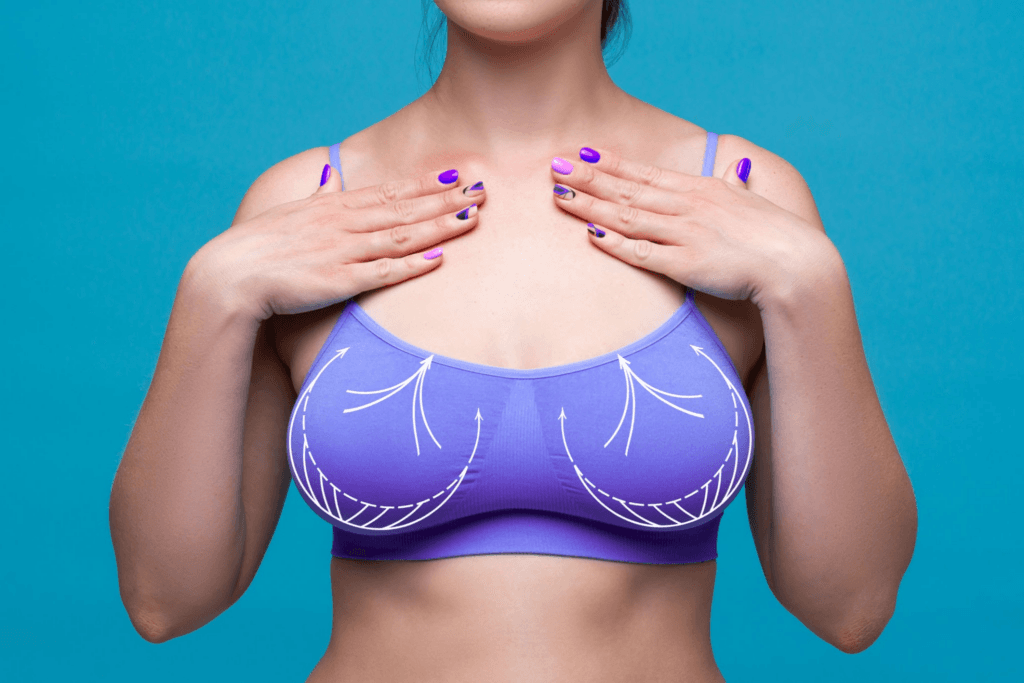Breast reconstruction surgery is a vital option for individuals who have undergone a mastectomy due to breast cancer or have experienced breast trauma resulting in significant tissue loss. This procedure aims to restore the breast’s shape and symmetry, significantly improving a patient’s physical and psychological well-being. The decision to pursue reconstruction is deeply personal, and understanding the available options is crucial for making an informed choice. This article provides an overview of breast reconstruction techniques, both surgical and non-surgical, along with insights into the recovery process and long-term outcomes.

Table of Contents
Understanding Reconstruction Options
Breast reconstruction offers a range of choices tailored to individual needs and circumstances. The optimal approach depends on factors such as the extent of the mastectomy (total or partial), the patient’s overall health, skin quality, and personal preferences. These factors are carefully considered during consultations with a plastic surgeon and a medical oncologist, if applicable. The timing of reconstruction is also a key decision; it can be immediate (performed at the same time as the mastectomy) or delayed (undertaken later). Immediate reconstruction can sometimes simplify the surgical process and reduce the number of procedures needed.
Delayed reconstruction allows time for healing from the mastectomy and may provide a clearer picture of the final outcome. Different types of reconstruction techniques are available, each with its own advantages and disadvantages. These include autologous reconstruction (using the patient’s own tissue) and implant-based reconstruction (using silicone or saline implants). The choice between these methods depends on factors such as the amount of available tissue, the patient’s body habitus, and their aesthetic goals. A thorough discussion with the surgical team is essential to determine the most suitable approach.
The decision to reconstruct one or both breasts is also a personal one. If only one breast was removed, the patient may choose to reconstruct only the affected side or to undergo a reduction mammoplasty on the opposite breast to achieve symmetry. In cases of bilateral mastectomies, reconstruction can be performed on both breasts simultaneously or sequentially. The surgeon will carefully explain the potential benefits and risks associated with each option, helping the patient make a decision that aligns with their individual needs and expectations. Psychological factors, such as body image concerns, should also be considered and addressed throughout the process.
Finally, it’s important to remember that reconstruction is not always perfect, and some degree of asymmetry may remain. However, even minor improvements can have a significant positive impact on a patient’s self-esteem and quality of life. Open communication with the surgical team throughout the process is key to managing expectations and achieving the best possible outcome.
Surgical Techniques Explained
Autologous reconstruction utilizes the patient’s own tissue to create a new breast. The most common techniques involve using tissue from the abdomen (TRAM flap), the back (latissimus dorsi flap), or the buttocks (gluteal flap). These flaps are surgically detached from their original location, carefully reshaped, and then transferred to the chest to form a new breast mound. The advantages of autologous reconstruction include a more natural feel and appearance, as well as a reduced risk of implant-related complications. However, it involves a more extensive surgical procedure with a longer recovery period and potential donor site morbidity.
Implant-based reconstruction uses silicone or saline-filled implants to create the breast mound. This method is generally less invasive than autologous reconstruction and requires a shorter recovery time. The implants are placed either directly under the chest muscle (subpectoral) or on top of the muscle (submuscular). The choice of placement depends on several factors, including the patient’s body habitus and the surgeon’s preference. Implant-based reconstruction may require additional procedures, such as skin grafting or nipple reconstruction, to achieve a natural-looking result.
Nipple-areola reconstruction is often a final step in the breast reconstruction process. This can involve tattooing, grafting skin from another area of the body, or using a combination of techniques. The goal is to restore the natural appearance of the nipple and areola, further enhancing the aesthetic outcome of the reconstruction. The timing of nipple reconstruction varies depending on the individual patient and the chosen reconstruction method. It’s often performed several months after the initial breast reconstruction to allow for adequate healing.
Finally, it’s important to note that many patients may require a combination of techniques to achieve optimal results. For example, a patient might undergo autologous reconstruction to create the breast mound and then use an implant to refine the shape and volume. The surgical plan is highly individualized and tailored to meet the specific needs and goals of each patient.
Non-Surgical Reconstruction Methods
Non-surgical breast reconstruction options primarily focus on enhancing the appearance of the chest wall after mastectomy. These methods are not true reconstruction in the sense that they don’t create a new breast mound, but they can significantly improve the patient’s body image and confidence. One common approach involves using breast prostheses, which are external devices worn inside a bra or directly against the skin. These prostheses come in various shapes, sizes, and weights, allowing for a customized fit and feel.
Another non-surgical option is breast shaping garments, which provide support and compression to the chest wall. These garments can help to improve the appearance of the chest and minimize the visible effects of the mastectomy. They are particularly helpful in the early stages of recovery, providing comfort and support while the body heals. Furthermore, some patients may opt for tattooing to create the illusion of a nipple-areola complex. This technique can be used alone or in conjunction with other non-surgical methods.
Fat grafting, while technically a surgical procedure, can be considered a less invasive alternative to traditional reconstruction methods. It involves transferring fat from another area of the body (such as the abdomen or thighs) to the chest to augment the breast volume. This procedure can be used to improve the shape and fullness of the breast, particularly in cases where the patient has sufficient fat reserves. However, fat grafting may require multiple sessions to achieve the desired results.
Ultimately, the choice between surgical and non-surgical methods depends on individual preferences, health status, and the extent of the breast tissue loss. Non-surgical options offer a less invasive and often more affordable alternative to surgery, but they may not provide the same level of breast restoration as surgical techniques. A thorough discussion with a plastic surgeon is crucial to determine the most appropriate approach.

Recovery and Long-Term Outlook
The recovery period after breast reconstruction surgery varies depending on the chosen technique and the individual patient’s health. Autologous reconstruction typically involves a longer recovery time, with potential discomfort and limitations in activity for several weeks or even months. Implant-based reconstruction generally has a shorter recovery period, but patients may still experience some pain, swelling, and bruising. Pain management strategies, including medication and physical therapy, are often implemented to aid in the recovery process.
Post-operative care is crucial for optimal healing and minimizing complications. This includes regular follow-up appointments with the surgeon, adherence to prescribed medications, and careful wound care. Patients are typically advised to avoid strenuous activities and heavy lifting for a period of time after surgery. The surgeon will provide specific instructions regarding activity restrictions and post-operative care based on the individual patient’s needs. Regular monitoring for potential complications, such as infection or seroma formation, is also essential.
Long-term outcomes of breast reconstruction are generally positive, with many patients experiencing significant improvements in their body image and quality of life. However, it’s important to be aware of potential long-term complications, such as implant rupture or capsular contracture (in the case of implant-based reconstruction), or changes in sensation in the reconstructed breast. Regular check-ups with the surgeon are recommended to monitor for any potential issues and to ensure the long-term success of the reconstruction.
Ultimately, the long-term outlook depends on several factors, including the chosen reconstruction technique, the patient’s overall health, and adherence to post-operative care instructions. Open communication with the surgical team and a proactive approach to managing potential complications are key to achieving a positive and lasting outcome. Many patients find that breast reconstruction not only restores their physical appearance but also significantly improves their psychological well-being and self-confidence.
Breast reconstruction surgery offers a range of options to help individuals regain their body image and confidence after mastectomy or breast injury. The choice of technique depends on individual factors and requires careful consideration and discussion with a qualified surgical team. While the recovery process may involve challenges, the long-term benefits often significantly outweigh the risks, leading to improved physical and psychological well-being. Understanding the available options and the recovery process empowers patients to make informed decisions and achieve the best possible outcome.
Transform Your Confidence with Surgyteam!
Join the thousands of satisfied patients who have experienced the exceptional care and expertise of Surgyteam’s renowned plastic surgeons. Whether you’re seeking aesthetic enhancements or reconstructive surgery, our dedicated team in Antalya is here to provide you with the highest quality treatment and personalized care.



